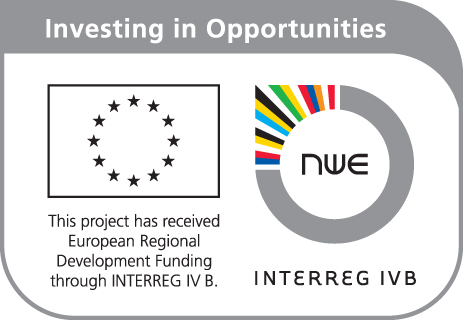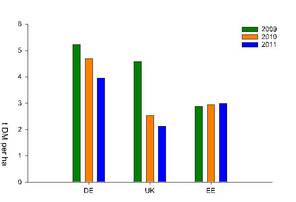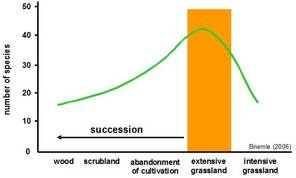
Productivity and Biodiversity
The adjacent figure displays the results of productivity tests on extensively used (unfertilised) grassland sites within the PROGRASS project.
With extensive mowing the annual grassland yields (t DryMatter / ha) decreased slightly on the German sites and noticeably on the Welsh sites within the 3-years experiment.
In contrast, on other sites (Estonia) the yields were stable on a low level.
The second figure displays the interrelation between rural land use and biodiversity.
An intensive grassland use with frequent mowing and manuring reduces the number of species drastically.
Similarly the richness of species is slowly reduced by a more extensive land use accompanied by a successive transformation to scrublands and woods.
The last figure shows the changes in the number of species observed during a three years long field experiment in Germany (DE), United Kingdom (UK) and Estonia (EE) on six different sites.
The strongest gains are observed on the comparably species-poor Welsh sites.
The species-rich sites in Germany and Estonia could maintain their biodiversity and realise new species too.
Endangered species of the red list and particular rare species like early purple orchid and globe-flower could be conserved.



